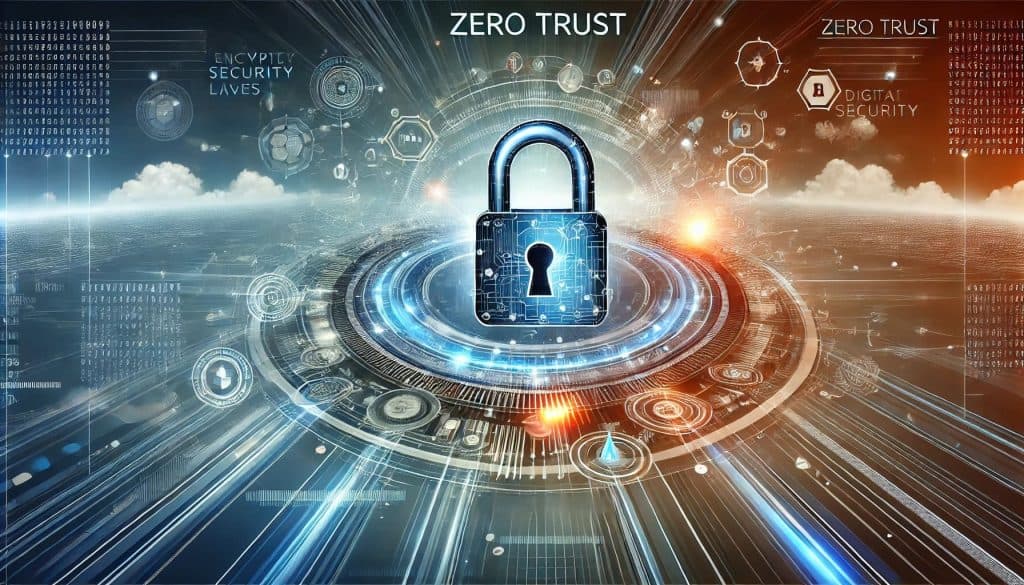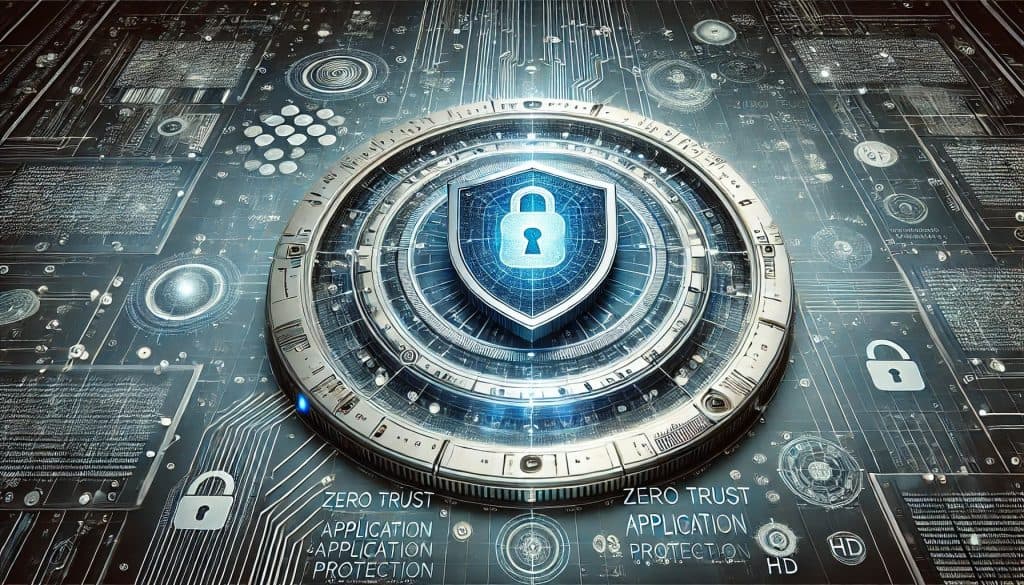In today’s rapidly evolving digital environment, understanding zero trust is critical to ensuring strong cybersecurity. The Zero Trust security model fundamentally changes how organizations protect their networks and data by removing the concept of trust within the network perimeter. By implementing this framework, organizations can mitigate risk and protect against increasingly sophisticated cyber threats. This comprehensive guide details the concept, background, evolution, types, implementation, and pros and cons associated with this security model.
What is Zero Trust?

Zero Trust is a cybersecurity framework that requires all users, whether inside or outside the network, to be authenticated, authorized, and continuously validated before being granted or maintaining access to applications and data. It works on the principle of “never trust, always verify,” as opposed to the traditional security model of trusting internal traffic. This approach ensures that all access requests are thoroughly vetted and that implicit trust is not granted based solely on network location.
The key principles are
- Least privileged access: The user is granted the minimum level of access required to perform the task.
- Micro-segmentation: Break your network into smaller segments to limit the lateral movement of threats.
- Continuous monitoring: Continuously monitor all user activity to detect and respond to potential threats in real time.
- Authentication and authorization: Multi-factor authentication (MFA) and strict access controls are enforced.
Zero Trust background
Its concept emerged as a response to the sophistication of cyber threats and the limitations of traditional perimeter-based security models. Traditional models operate primarily on the assumption that threats originate outside the network in order to provide a strong perimeter defense, but with weakened internal security controls. However, with the rise of cloud computing, mobile workforces, and sophisticated cyberattacks, this approach has proven insufficient.
The key aspects of the Zero Trust model include the following
- Continuous verification of user identity: All access requests must be verified and approved.
- Strict control over resource access: Access is granted based on the principle of least privilege.
- Micro-segment the network: Break the network into smaller segments to limit lateral movement.
- Monitor and record user activity: Track user activity to detect suspicious behavior.
List of traditional vs. Zero Trust security model characteristics
| Attributes | Traditional security model | Zero Trust security model |
|---|---|---|
| Perimeter Defense | Strong perimeter, weak internal controls | Powerful control across your entire network |
| Trust models | Implicit trust in internal traffic | No implicit trust, continuous validation |
| Network Partitioning | Limited | Extensive micro-segmentation |
| Access control | Role-based, often broad | Strict least privilege principle |
| Monitoring | Limited internal monitoring | Strict least privilege principle |
| User authentication | Single factor, often weak | Multi-factor authentication (MFA) |
| Data encryption | Inconsistent | Consistent data is at rest and in transit |
The evolution of Zero Trust
This evolution can be traced through its adoption and implementation across a wide range of organizations and industries. What was first conceptualized by Forrester Research has evolved into a comprehensive security framework embraced by leading technology companies and security professionals around the world. Key milestones in this evolution include
| Year | Milestones |
|---|---|
| 2010 | Forrester Research introduces the concept of Zero Trust. |
| 2014 | Google implements BeyondCorp, an internal zero-trust model. |
| 2018 | NIST publishes guidance on zero trust architecture. |
| 2020 | Zero Trust is being widely adopted amid the rise of remote work. |
The evolution of cloud computing and the sophistication of cyber threats have accelerated its adoption. Companies like Google, Microsoft, and AWS have been instrumental in developing the technologies and promoting the principles that support this security model.
Types of Zero Trust

Zero Trust can be implemented in a variety of ways, depending on your organization’s specific needs and infrastructure. Common types include
| Type | Description |
|---|---|
| Network-based | It focuses on segmenting and securing network traffic. |
| Device-based | Ensure that only trusted devices can access your network. |
| User base | Emphasize strict identity and access management. |
How Zero Trust works
Zero Trust operates on the principle of “never trust, always verify.” It includes continuous validation of user and device identities, real-time monitoring of activity, and strict access controls to ensure that only authorized users can access sensitive resources. Key components include
Identity and access management (IAM)
IAM systems play a critical role in ensuring that only authorized users have access to network resources, including
- User authentication: Verify user identity through methods such as MFA.
- Access control: Grant access based on user roles and the principle of least privilege.
- Identity federation: Unify identity management across multiple systems and platforms.
Multi-factor authentication (MFA)
MFA adds a layer of security by requiring users to provide multiple forms of verification before accessing resources. This reduces the risk of unauthorized access with stolen credentials.
Encryption
Encrypting data in transit or at rest ensures that it remains unreadable and secure, even if it is intercepted or accessed without authorization. Zero Trust emphasizes the importance of end-to-end encryption.
Real-time monitoring and anomaly detection
Continuous monitoring of user activity helps you detect and respond to potential threats in real time. Advanced anomaly detection systems can identify unusual patterns of behavior and trigger alerts for further investigation.
For a deeper understanding of how Zero Trust architecture works and real-world implementations, watch these insightful videos
Companies
Several leading organizations have adopted and implemented the Zero Trust model, contributing to its development and proliferation. Notable companies include
Pioneering with Beyond Corporation initiatives that redefined how internal resources are accessed securely.
Microsoft
It offers solutions through Azure AD and other security services, emphasizing identity and access management.
Amazon Web Services (AWS)
Provides a framework for architecture around a secure cloud environment.
Z Scaler
Specializes in security solutions and provides cloud-based services that apply principles.
Palo Alto Networks
Comprehensive network security, including advanced firewall and endpoint protection solutions.
Pros and cons
There are many benefits to implementing a zero trust model, but there are also some challenges. Here are the main pros and cons
| Prose | Cones |
|---|---|
| Enhanced security | Implementation complexity |
| Reduce breach risk | Requires significant changes to existing infrastructure |
| Improve compliance | Potential impact on user experience |
| Increased visibility and control | High initial setup and maintenance costs |
Impact of Zero Trust

The impact on an organization can be significant and affects many aspects of operations and security. Key impacts include
- Enhanced data protection and privacy: Enhance data protection and privacy by restricting access to sensitive data and continuously verifying access requests.
- Enhanced threat detection and response: Continuous monitoring and real-time anomaly detection help you identify and respond to potential threats more quickly.
- Increase resilience to cyberattacks: Help your organization become more resilient to cyberattacks by minimizing potential attack vectors and reducing the impact of a breach.
- Compliance with regulatory requirements: Help organizations meet regulatory requirements for data protection, access control, and monitoring.
Conclusion
Zero Trust represents a significant shift in the way organizations approach cybersecurity. By adopting a “never trust, always verify” mindset, organizations can better protect their networks and data from evolving threats. While implementation can be complex, the benefits of improved security and reduced risk make it a worthwhile investment. As cyber threats continue to evolve, adopting the model can provide the robust security needed to protect sensitive data and maintain business continuity.
Key takeaways
- Zero Trust eliminates the concept of trust within the network perimeter.
- Continuous validation of user and device identity is essential.
- Leading companies like Google and Microsoft have adopted the model.
- Implementations provide improved security, but can be complex and challenging.
- Improve data protection, enhance threat detection, and ensure compliance.
See also
- Cloudflare. What is Zero Trust?
- ZScaler. What is a Zero Trust Architecture?
- Trend Micro. Zero Trust Architecture.
